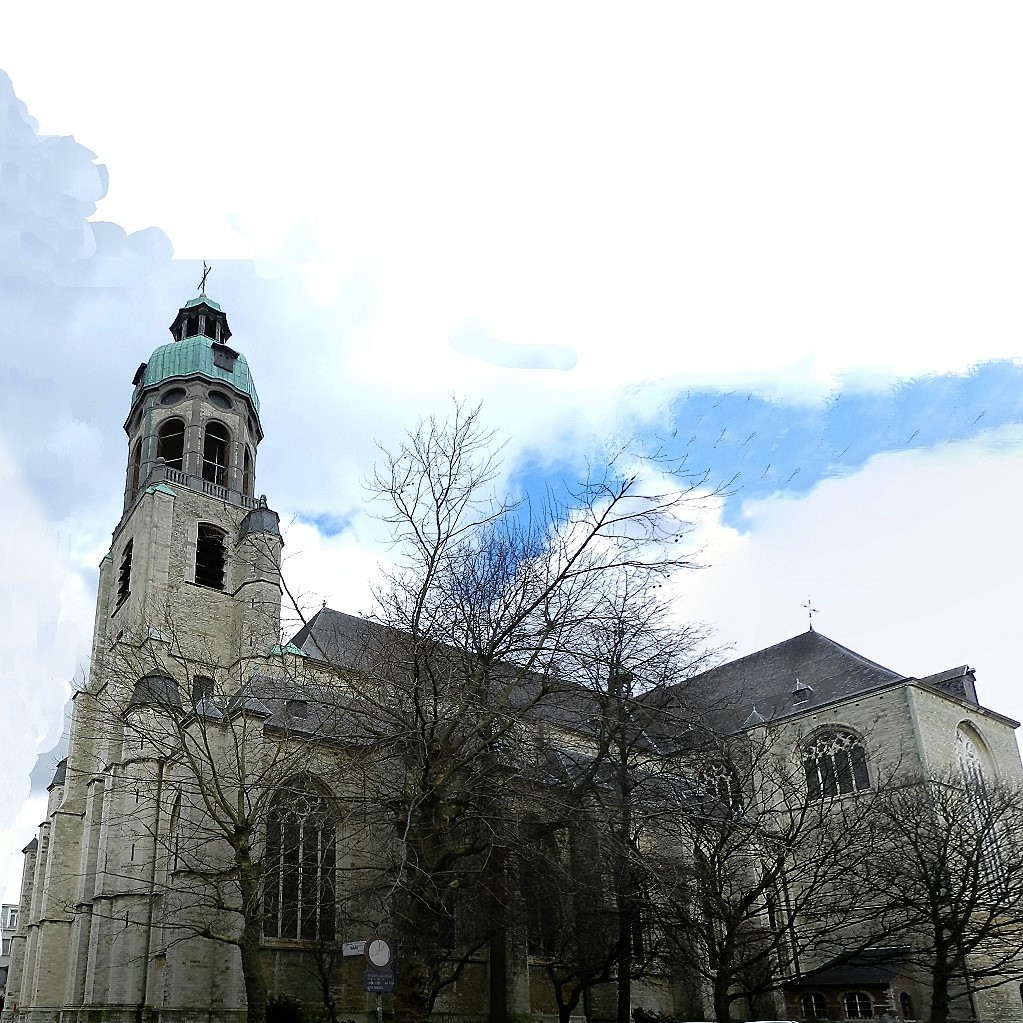Antwerp's St Andrew's Church, a revelation.
The Way of the Cross
The way of the cross in SaintThis is a title that the Church bestows on a deceased person who has lived a particularly righteous and faithful life. In the Roman Catholic and Orthodox Church, saints may be venerated (not worshipped). Several saints are also martyrs. Andrew’s (1845-1857) is the oldest of this type in Antwerp. No fewer than twelve painters produced one or two stations in Baroque style. Even though the big paintings are colourful and emotional and even though some artists found inspiration in the works of great masters, the ensemble often remains academically cool. Vincent van Gogh, who, probably stimulated by his teachers at the Antwerp academy, came to look at their works, was not impressed.
However, thanks to the series, an initiative of vicarAccording to Canon Law, a vicar is a substitute of a minister. In a diocese, several vicars assist a bishop: priests who look after a certain policy area within the diocese (parishes, liturgy, etc.). Visschers, the church is less bare. This was certainly the case when the paintings were still in their monumental Baroque frames in which the instruments of the Passion had been incorporated, beside a cartouche with the title of the scene and the names of the donators. When in 1970-1975 the interior of the church was restored, these frames no longer fitted the urge for more austerity, which was characteristic for those days. The paintings even had to make room for pure architectural aesthetics (i.e. new, but false columns). The Stations of the Cross were hung close to each other in both transepts.
In 2003 they were put back in their original positions. The frames however, stored in some city warehouses, were lost. Instead of repeating a (superfluous) descriptive title of each stationOne of the fourteen stages of the Way of the Cross: Jesus is sentenced to death.
Jesus takes up the cross.
Jesus falls the first time.
Jesus meets His mother.
Simon of Cyrene helps Jesus carry the cross.
Veronica wipes Jesus’s face.
Jesus falls the second time.
Jesus comforts the mourning women.
Jesus falls the third time.
Jesus is stripped naked.
Jesus is nailed to the cross.
Jesus dies.
Jesus is taken down from the cross.
Jesus is laid into a tomb.
of the Cross, or emphasizing the counting of the stations or bringing the names of patrons back to life, the Dutch and English subtitles want to show intriguing questions inviting for contemplation.
| 1st station | Jesus is condemned to death (Karel Wauters, 1852) Jesus is brought before the Roman governor Pontius Pilate, the symbol of the cowardly unjust judge. (P. Pilate) “I wash my hands of this.” (witness) “Do you think so?” |
| 2nd station | Jesus takes up His cross (Jules Romain Pecher, 1854) If you love without limits, you condemn yourself to carry the cross. |
| 3rd station | Jesus falls for the first time (Lambert Mathieu, 1852) Jesus carries his cross out of love for you. What is your reply? |
| 4th station | Jesus meets his mother Mary (Jan-Baptist Van Rooy, 1845) |
| 5th station | Simon of Cyrene helps Jesus carry the Cross (Alexander Markelbach, 1854) (Simon of Cyrene) “Out of love for you, Jesus.” Whose cross do you help carry? |
| 6th station | Jesus meet Veronica (Edward Dujardin, 1854) “May God let his face to shine upon us!” (Liturgy of Good FridayThe Friday before Easter when the death of Jesus on the cross is commemorated. Traditionally, the Stations of the Cross are used as a source of meditation on this day.) |
| 7th station | Jesus falls for the second time (Karel Verlat, 1856) “Our sorrows He carried.” (Is 53,4) “Through His wounds we are healed.”(Is 53,5) |
| 8th station | Jesus consoles the weeping women (Antoon Van Ysendyck, 1851) (Jesus) “Do not weep for me; weep rather for yourselves.” (Lk 23,28) |
| 9th station | Jesus falls for the third time (Jozef Correns, 1849) “This is the Lamb of God who takes away the sins of the world.” (Jn 1,29) |
| 10th station | Jesus is stripped of his clothes (PetrusHe was one of the twelve apostles. He was a fisherman who, together with his brother Andrew, was called by Jesus to follow Him. He is the disciple most often mentioned In the Gospels and the Acts of the Apostles. His original name was Simon. He got his nickname Peter (i.e. rock) from Jesus, who, according to tradition, said that He would build His Church on this rock. Kremer, 1850) “A man of sorrows, rejected and despised by men.” (Is 53,3) |
| 11th station | Jesus is nailed to the cross (Louis Hendrix, 1857) (Jesus) “Forgive them, Lord, they aren’t aware of what they are doing.” (Lk 23,28) |
| 12th station | Jesus dies on the cross (Alexander Merkelbach, 1853) (Jesus) “What more could I have done for you?” |
| 13th station | Lamentation (Karel Verlat, 1850) “How much a mother suffers!” (Hendrik Conscience) |
| 14th station | the entombment of Jesus (Jan Baptist Van Eycken, 1844) “After his ordeal He will see the light.” (Is 53,11) |

